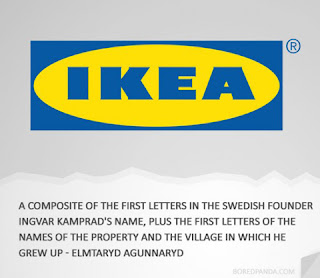In this article, you'll learn...
- The basics of calculating marketing ROI
- A more nuanced and comprehensive way to calculate ROI
Sure, marketers like to hear those familiar three little words: "I love you." But, let's face it, no three words are more beautiful and pulse-racing to hear while on the job than "return on investment" (ROI).
Marketers are on the hook. Measuring ROI on each marketing activity is critical to proving our effectiveness and competing for scarce resources. Evidence that supports that notion: Nearly two-thirds of surveyed CMOs (63%) think ROI will be the primary measure of their effectiveness by 2015.
But what was profoundly revealing was that 56% of surveyed CMOs said they feel inadequately prepared to manage ROI. That means the pressure is on to calculate ROI in ways that yield accurate, supportable numbers, particularly pertaining to marketing expenditures.
CMOs who understand financial and statistical analysis are putting themselves on a level playing field with their brethren in other corporate departments, because those CMOs are using the same measuring stick to prove effectiveness.
Measuring ROI effectively will help marketers add value to their organizations and attract their fair share of resources.
Basic ROI Calculation
The math is basic, but the components aren't always easy to figure out. Any solid ROI calculation should measure revenue generated by the marketing campaign, profit margin on the items sold, and marketing-related expenses. Yes, profit margin can be difficult for organizations to quantify because it incorporates the cost of operations, but it's a necessary ingredient to calculate ROI accurately.
Keep in mind that to be able to quantify revenue generated "by the marketing campaign," those campaigns need to have been designed to capture responses in the form of revenue from sales.
In its simplest form, the calculation looks like this:
ROI = Campaign Revenue X Profit Margin / Cost of Campaign
That simple ROI calculation is a solid metric for getting a quick "temperature check" on campaign performance. The basic calculation works for basic comparisons, such as "Campaign 1 is doing better than Campaign 2" or "we improved this month over last month."
That formula is also useful for measuring pilot marketing campaigns, since those efforts are often launched with one-time investment costs or temporary extraordinary expenses that wouldn't apply once project efficiencies are captured in a full-blown campaign.
Though that basic ROI calculation is a good starting point and it keeps things reasonably simple, it lacks several key enhancements. The calculation sometimes doesn't factor in all of the costs associated with the campaign, and it doesn't consider the impact of control groups. Both of those are required to evaluate the actual revenue generated by a campaign.
The Advanced Version
Marketing will need to take a more advanced approach to ROI calculation if it wants to play in the same ballpark as the other departments in your company—and if it wants to be evaluated by similar financial measures.
Advanced ROI calculations should include all of the costs associated with having a marketing department: salaries, benefits, office space, computers, software, Marketing's share of the bills (heat, electricity, etc.), plus all of the direct campaign costs. All of those costs added together would give you the "cost of campaign" figure in the formula.
Also important in advanced approaches to calculating ROI is to factor in dollars generated and purchases generated from both the target group and a control group. Doing so will help you answer important questions, such as whether the average purchase dollar amount was higher from the target group or the control group... or whether the target group purchased at a higher rate than the control group.
If the average number of purchases generated from the control group and the target group is the same, consider the difference in the average dollars generated. Similarly, if the average dollar amount spent is the same between both groups, the most important factor is the difference in average number of purchases generated.
First, determine the number of sales from the target group that would have taken place without the marketing campaign by measuring the average number of purchases generated in the control group. Now, multiply that number by the average purchase amount ($) from the control group. Subtract that number from the total target group revenue to determine accurate campaign revenue. The equation looks like this:
Campaign Revenue = Total Target Group Revenue – (Average Amount of Control Group Purchases X Number of Transactions That Would Have Occurred Anyway)
That calculation factors out the transactions that would have occurred without the new marketing campaign, leaving the incremental revenue gain from the higher average transaction amount of the target group. Taken further, such calculations could enable a marketer to compute statistical tests of significance for the target and control group differences.
* * *
Hopefully, this article will help you apply the tools to excavate the important numbers that improve marketing ROI, and, coincidentally, reveal ways that you can get closer to the customer.
Jim Bergeson is president and CEO of Bridgz Marketing Group in Minneapolis, a BI WORLDWIDE company and member of ICOM, the 50-nation network of independent marketing communications organizations.



















